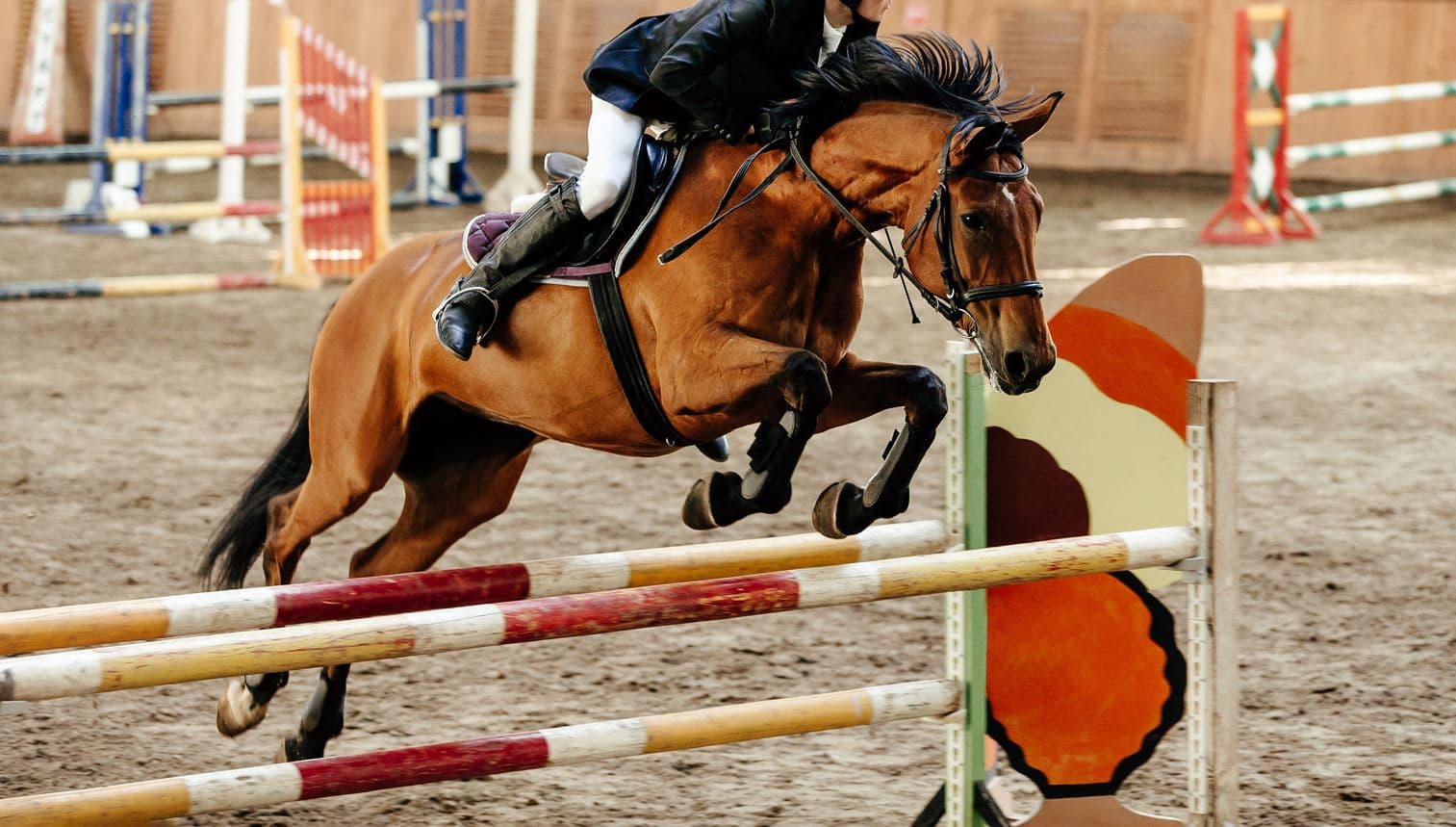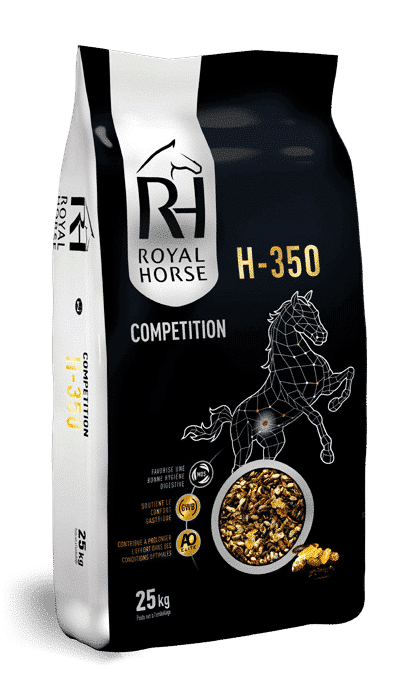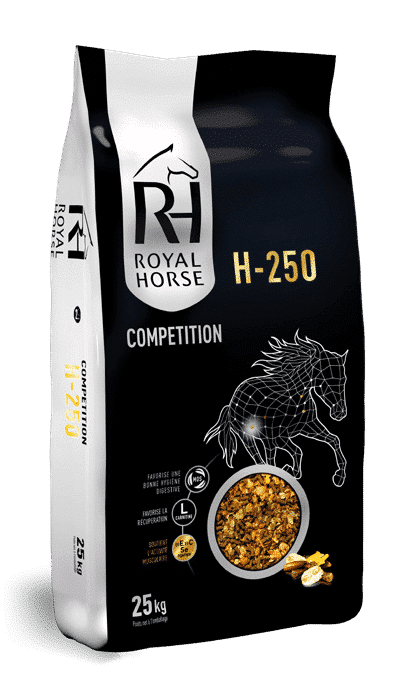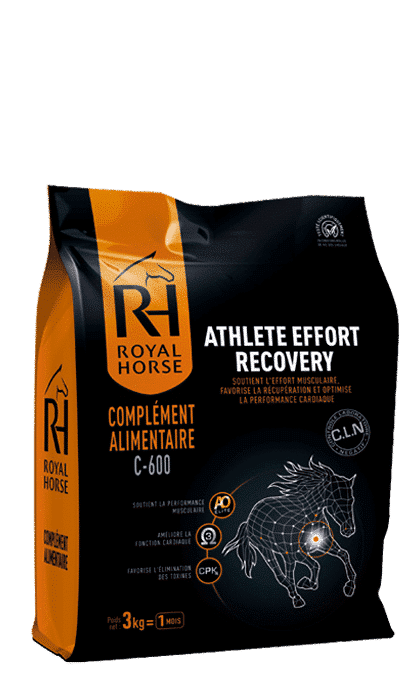The metabolism of the show jumping or dressage horse, and of sport horses in general, can be very demanding. In order to meet the feeding needs of the show horse, it is important to adapt its ration so that it is balanced and can meet the high demands placed on it. It is therefore necessary to choose well-balanced horse feed for optimal equine performance.
Feeding the competition horse : fiber intake
First of all, let’s remember that the horse is a herbivore. The digestion of horses is very complex and the horse’s stomach is relatively small, hence its need to eat very regularly throughout the day. The horse’s dietary fiber requirements are therefore paramount and must be met with a sufficient hay ration, available for most of the day. Early harvested hay is richer in energy and protein, and should therefore be preferred as horse feed. To calculate the ideal hay ration for your show horse, know that it should represent 1.5 to 2% of your horse’s live weight. That is to say, for a horse weighing 500 kilos, the hay ration will be 8 to 10 kilos per day.
On the other hand, fibers guarantee a regular transit and a balanced intestinal flora, but also a mental and psychic relaxation for your show horse! Also, a horse in a stall quickly gets bored, which can lead to the appearance of disorders such as tics (in the air, in the bear or when leaning) or agitation. It takes about 40 minutes to chew a kilo of hay, compared to 10 minutes for a kilo of concentrated food. This is the same amount of time your horse will be busy feeding.
Carbohydrate intake
A competition horse will need a significant amount of carbohydrate energy. This comes from cereals and is stored in the liver. It allows the horse to provide short and intense efforts. However, the intake of this energy must be limited. Cereals contain 50 to 70% starch, which is then transformed into glucose.
They are, for example, more present in the diet of racehorses, which have higher energy requirements. However, excess starch is harmful to your horse’s digestive system and can cause diarrhea, colic or gastric ulcers.
Fat intake
Part of the starch can be replaced by a lipid-based ration, i.e. polyunsaturated fatty acids of the omega 3 or omega 6 type. The advantage of these fatty acids is that they are just as energetic, but much more easily digested by your horse. On the other hand, the enzymatic digestive system of your show horse needs time to adapt to transform these vegetable oils into energy.
This is why fats should be included in the horse’s diet before the competition season, so that the energy is released correctly at the time of effort. Lipids are a very good source of energy to increase the horse’s endurance and will therefore be present in greater quantities in the diet of endurance or CCE horses, but to a lesser extent for show jumping or dressage horses.
What feed should I choose for my competition horse?
The development of competition horses goes through several stages, particularly training. Your horse’s diet must be adapted to its physical development, its growing energy needs and the evolution of its morphology. The H range of Royal Horse feeds offers a balanced equine diet corresponding to the diet of your competition horse. These horse feeds are available in specialized stores.
They contain proteins for horses, antioxidants, omega 3 and 6, pre-biotics, trace elements and vitamins necessary for your horse. These horse feeds come in pellet (H200) or flake (H250, H350) form.
For horses prone to muscular and gastric problems, the H150 feed is recommended because it contains a low starch content. The C500 feed supplement is also recommended for horses with highly stressed joints, thanks to its content of highly assimilable non-animal chondroitin, glucosamine and MSM associated with a plant antioxidant that helps maintain the integrity of the horse’s cartilage.
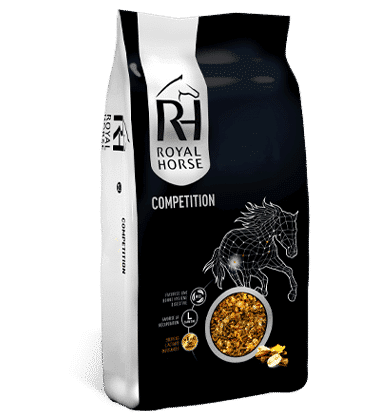
To promote your horse’s recovery, you can also opt for Royal Horse C600 horse supplement, specially designed to improve heart function, eliminate toxins and support the muscular performance of horses during exercise. Whether for show jumping or dressage competitions, this high performance nutrition will give your high performance horses the necessary nutrients for the effort but also to support their recovery.
Some advice before and after the competition
To prepare your horse for a show jumping championship or any other stage of the equestrian circuit, a few good practices are necessary. Before a competition or an intense effort, do not let your horse fast. Conversely, avoid working or competing with your horse right after he has eaten his feed.
The ideal food for your horse would be to give him a small ration of hay (about 2 kilos) before the effort. Don’t forget that horses also rely heavily on water for nutrition, so make sure he has plenty to drink before and after the competition. In case of high temperatures, anticipate water loss by giving your horse electrolytes before, during and after the competition but in small quantities.
Apart from horse nutrition, other factors will help your horse to become a winning horse. For example, regular outings after work will help boost morale, such as a walk or trot in the woods. Regular veterinary follow-up for vaccinations (usually once a year) and deworming (several times a year) is also necessary to ensure his daily well-being.
